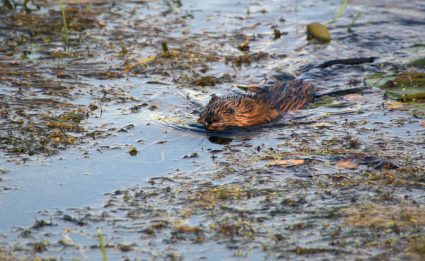
Discovering a skunk in your house can be an alarming experience, especially given the animal’s notorious reputation for spraying a foul-smelling liquid when threatened. However, with the right knowledge and approach, you can effectively remove the skunk from your home and take measures to prevent future invasions. This article provides a comprehensive guide on how to get a skunk out of your house, including safety precautions, effective methods, and preventive measures.
To get a skunk out of your house, first, stay calm and identify the skunk’s entry point, blocking all others and leaving only the desired exit open. Use deterrents like bright lights or talk radio to encourage the skunk to leave. If necessary, use a live trap and protective clothing to safely approach and capture the skunk. Remove all food sources and use repellents to discourage the skunk from returning. If you’re uncomfortable handling the situation, call a professional wildlife control service.
Initial Steps
When you first notice a skunk in your house, it’s crucial to react calmly. Skunks are easily frightened and may spray if they feel threatened. Identify how the skunk entered your house, then block off all potential entry points, leaving only the exit you want the skunk to use.
In addition, you can use deterrents like bright lights or talk radio to encourage the skunk to leave. Skunks are nocturnal and dislike bright lights and human voices. If the skunk is stuck in a space like a window well, provide a ramp for it to climb out.
Safely Approaching a Skunk
Maintaining a safe distance and moving slowly and calmly can prevent the skunk from feeling threatened. If you need to get closer, wear protective clothing and use a live trap. Once the skunk is trapped, cover the trap with a blanket or tarp to keep the skunk calm and prevent it from spraying.
Coaxing a Skunk Out
There are several methods you can use to coax a skunk out of your house. Removing food sources, installing lights, making noise, and using repellents can all help. Skunks are attracted to foods with strong smells, so using items like canned fish or peanut butter as bait can be effective.
Tools and Equipment
To safely remove a skunk from your house, you’ll need a live capture trap, protective gloves, a blanket or tarp, and a flashlight. After the skunk has been removed, you may need to address any lingering odors.
Risks and Dangers
Having a skunk in your house can pose several risks, including the potential for a skunk spray, disease transmission, property damage, and attracting other pests. If you notice signs of a skunk’s presence, it’s best to call a professional to remove it.
Preventing Future Skunk Invasions
Once you’ve successfully removed a skunk from your house, it’s essential to take preventive measures to avoid future invasions. These include limiting access to food and shelter, screening off potential shelters, decluttering your lawn, installing lights, and using repellents.
Remember, dealing with a skunk in your house requires patience and care. If you’re unsure or uncomfortable handling the situation yourself, don’t hesitate to call a professional wildlife control service. By following these guidelines, you can effectively remove a skunk from your home and prevent future encounters.
Frequently Asked Questions
What is a live capture trap and where can I buy one?
A live capture trap is a device designed to catch animals without harming them, allowing for their safe removal and release. These traps are typically cage-like structures with a trigger mechanism that closes the door once the animal is inside. They are widely available in home improvement stores, garden centers, and online retailers like Amazon.
What repellents can I use to keep skunks away from my house?
Commercial repellents designed specifically for skunks are available, containing substances that skunks find unappealing. Natural repellents can also be effective, such as citrus peels, cayenne pepper, or ammonia-soaked rags. Always be sure to use repellents safely, following the manufacturer’s instructions.
What should I do if I get sprayed by a skunk?
If you get sprayed by a skunk, it’s important to act quickly to minimize the odor. Rinse your eyes with cool water if they were affected. For your skin and clothing, use a de-skunking solution made from 1 quart of 3% hydrogen peroxide, 1/4 cup of baking soda, and 1 teaspoon of liquid dish soap. Apply this solution to the affected areas (avoiding the eyes), let it sit for about five minutes, then rinse off.
Can skunks transmit diseases to humans or pets?
Yes, skunks can carry and transmit several diseases, including rabies, leptospirosis, and tularemia. They can also carry parasites such as fleas and ticks, which can transmit other diseases. Therefore, it’s important to avoid direct contact with skunks and to keep pets vaccinated and protected against fleas and ticks.
How do I clean my house after a skunk has been inside?
After a skunk has been in your house, thoroughly clean and disinfect the area where it was present to eliminate any diseases or parasites it may have left behind. If there’s a lingering smell, use a deodorizing product or a homemade solution of vinegar and water. For carpets and upholstery, you may need to hire a professional cleaning service.











